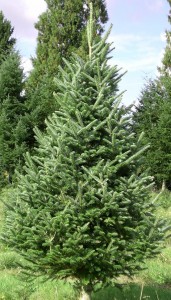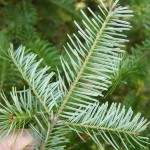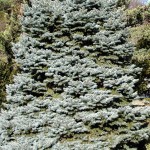The Perfect Christmas Tree
November 29th, 2011
At least 25 million cut evergreens will end up in American living rooms over the next 4 weeks.
Some of them will look nicer, hold ornaments better and keep their needles longer than others.
Which type makes the best choice? That’s open to some interpretation, but here’s a comparison of 8 species you might encounter — in the order I like them…
* Fraser fir (Abies fraseri). Fast becoming the favorite. It’s a sleek evergreen with branches that turn upward to reveal silvery undersides to blue-green needles.
Needles are soft and fairly short at 1 inch or less. Branches are very strong. Aroma also good. Only downside is it’s the most expensive type.
Needle retention rating: Excellent.
* Douglas fir (Pseudotsuga menziesii). Not a true fir but has fir-like soft, bluish-green needles that are 1 to 1½ inches in length.
Branches are strong, and tree has dense, bushy habit. Very nice citrus fragrance. Currently Pennsylvania’s top-selling Christmas-tree variety.
Needle retention rating: Excellent.
* Concolor fir (Abies concolor).Also known as “white fir,” this has soft, blue-green foliage with narrow, rounded needles 1 to 1½ inches long.
Has natural pyramidal shape and nice citrus aroma.
Needle retention rating: Very good.
* Canaan fir (Abies balsamea var. phanerolepis). This is one of the newer kids on the block and is somewhat between the Fraser and Douglas firs in looks.
Its needles are soft, medium green in color and about 1 inch long. Branches are sturdy. Nice evergreen aroma.
Needle retention rating: Very good.
* Scotch pine (Pinus sylvestris). Was the king of Christmas trees a generation ago, but has been losing ground to the firs. Has a lot of benefits — very strong branches, nice pyramidal shape and blue-green color. Needles are slow to drop even when tree is dry.
Also one of the least expensive trees. Main down side is that the 2- to 3-inch needles are stiff, coarse and “jaggy,” which some people don’t like.
Needle retention rating: Very good.
* Balsam fir (Abies balsamea). One of the earliest evergreens used for Christmas trees, balsam fir has a dense, pyramidal habit that comes to a slender tip.
Needles are dark green, soft and ¾ to 1½ inches long. Needles turn up slightly to reveal lighter silvery-green undersides, similar to Fraser fir. Sturdy branches and distinct evergreen fragrance.
Needle retention rating: Very good.
* Colorado blue spruce (Picea pungens). The steely blue needle color is the big attraction here. Needles are stiff and 1 to 1½ inches long.
Branches are strong, and tree has nice symmetrical form. Aroma is negligible but some say bad when needles are crushed.
Needle retention rating: Fair.
* Norway spruce (Picea abies). Has shiny, dark-green foliage with stiff needles about ½ to 1 inch in length. Much more common as a landscape tree than a cut tree, but it has a slightly pendulous habit that some people like.
Branches about average in strength.
Needle retention rating: Poor.
Making the Pick
Some pointers on picking out that perfect tree and making it last:
1.) Make sure you know before leaving home how big of a tree you want. Then ask when the trees were cut and where they came from. The less time and less distance, the better.
2.) Check the needles for freshness. Take your thumb and forefinger and pull toward you along a branch. It’s normal for older brown needles to drop from inside the tree, but needles toward the end of the branches should be green and firmly attached.
Needles also should not snap when they’re bent between a thumb and forefinger.
3.) Pull prospective trees out from the line and have someone hold it up while you look at its form from different angles. Also look for straight trunks.
4.) The cut end should have a fresh cut of about one-half inch made soon before the tree goes in water inside. This ensures the tree’s “pores” are open and able to take up water. Make a straight, even cut — no angles or V’s.
5.) Make sure the tree is firmly secured in its stand before decorating, and display it well away from heat sources, such as fireplaces and heater vents.
6.) Make sure water is added often enough that the water level never drops below the cut stub. When exposed to air, sap will seal over the cut end and prevent the tree from taking up water even when new water is added to the reservoir.
The reservoir should be big enough so that each inch of the trunk’s diameter allows for one quart of water (i.e. a 4-inch trunk should have a reservoir that holds at least 4 quarts of water). Check water daily.
7.) No need to add bleach, aspirin or commercial preservatives to the water. Research has found that plain tap water works just fine.











